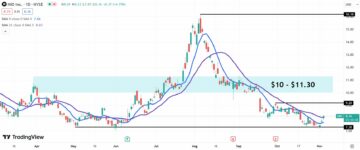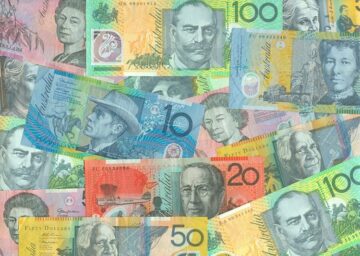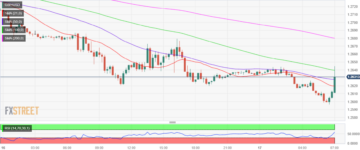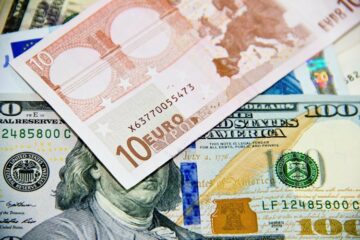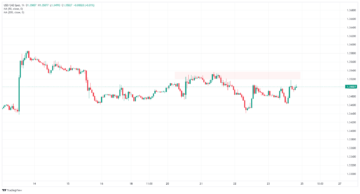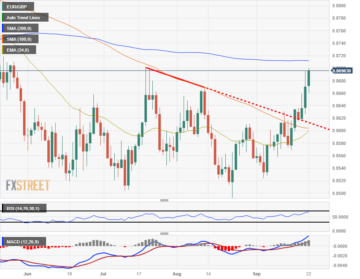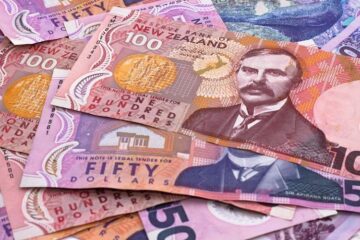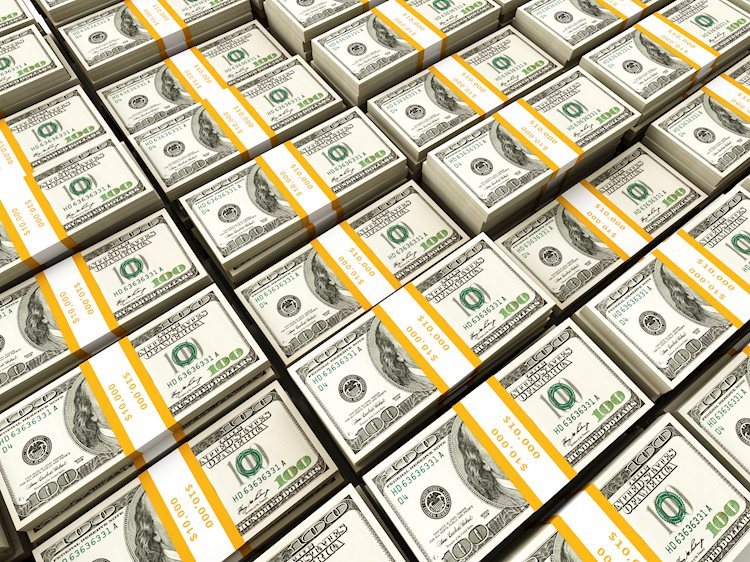
- The US Dollar trades in the red on Friday, and for the week.
- Market sentiment was very positive for equities, bearish for the US Dollar this week.
- The US Dollar Index falls below 104 again and selling pressure is visible on the charts.
The US Dollar (USD) is closing this week’s performance at a loss. A correlation with the risk sentiment and the fact that equities had a very upbeat week makes it clear that the US Dollar does not thrive when there is a risk on tone present in markets. With all three major US equity indices firmly higher for this week, the US Dollar Index is taking a step back and is set to close out the week lower.
On the economic data front, there is nearly nothing to report. Besides possibly a few surprise unscheduled comments from an US Federal Reserve member, it looks like markets will slowly head out into the weekend. Next week, nearly every day sees a pivotal number due to be released, with Durable Goods, US Gross Domestic Product, Personal Consumption Expenditures and Manufacturing data from the Institute of Supply Management all on the docket.
Daily digest market movers: ECB rate cuts March
- Mario Centeno from the European Central Bank came out saying that the ECB must be open for a cut in March. This comes as a surprise after earlier comments from ECB member Robert Holzmann, seeing no rate cuts this year for the ECB.
- Little by little more details are coming out on the sanctions packages both EU and US will be issuing.
- Nikkey Haley and former US President Donald Trump are facing their next vote in the presidential race this Saturday. This time the stage is in South Carolina with primaries on the docket.
- ECB governor Robert Holzmann made comments on Bloomberg television, saying that the European Central Bank (ECB) will not cut this year and will only consider cutting later and bigger rather than cutting too early.
- The EU has released its list of sanctioned companies in Russia, China, India and several other countries that are seen by the EU as aiding Russia in its war.
- The US from their side are still working on another sanction package this Friday. The packages come after opposition leader Alexei Navalny died in detention a few days ago.
- Equities are in the green, following suit with the upbeat sentiment in Asia where the Nikkei rallied again over 2%.
- The CME Group’s FedWatch Tool is now looking at the March 20 meeting. Expectations for a pause are at 97.5%, while chances of a rate cut stand at 2.5%.
- The benchmark 10-year US Treasury Note trades around 4.30%, retrets off Friday’s high.
US Dollar Index Technical Analysis: Pivotal week next week
The US Dollar Index (DXY) is set to close this week in the red after a lacklustre performance. The Greenback was outmatched by the risk on sentiment that swept equity markets higher. Seeing the light calendar, it looks like not much movement will be taking place ahead of the weekend. Expect to see traders keep their powder dry for next week where almost every day a pivotal economic data number is set to move the needle.
To the upside, the 100-day Simple Moving Average (SMA) near 104.07 is the first level to watch as a support that has been turned into a resistance. Should the US Dollar jump to 105.00, 105.12 is a key level to keep an eye on. One step beyond there comes 105.88, the high of November 2023. Ultimately, 107.20 – the high of 2023 – could even come back into scope, but that would be when markets reprice the timing of a Fed rate cut again, delaying it to the last quarter of 2024.
The 200-day Simple Moving Average at 103.73 was broken on Thursday and should see more US Dollar bears flock in to trade the break for a weaker US Dollar. The 200-day SMA should not let go that easily, so a small retreat back to that level could be more than granted. Ultimately, it will lose its force with the ongoing selling pressure and could fall to 103.16 at the 55-day SMA.
Central banks FAQs
Central Banks have a key mandate which is making sure that there is price stability in a country or region. Economies are constantly facing inflation or deflation when prices for certain goods and services are fluctuating. Constant rising prices for the same goods means inflation, constant lowered prices for the same goods means deflation. It is the task of the central bank to keep the demand in line by tweaking its policy rate. For the biggest central banks like the US Federal Reserve (Fed), the European Central Bank (ECB) or the Bank of England (BoE), the mandate is to keep inflation close to 2%.
A central bank has one important tool at its disposal to get inflation higher or lower, and that is by tweaking its benchmark policy rate, commonly known as interest rate. On pre-communicated moments, the central bank will issue a statement with its policy rate and provide additional reasoning on why it is either remaining or changing (cutting or hiking) it. Local banks will adjust their savings and lending rates accordingly, which in turn will make it either harder or easier for people to earn on their savings or for companies to take out loans and make investments in their businesses. When the central bank hikes interest rates substantially, this is called monetary tightening. When it is cutting its benchmark rate, it is called monetary easing.
A central bank is often politically independent. Members of the central bank policy board are passing through a series of panels and hearings before being appointed to a policy board seat. Each member in that board often has a certain conviction on how the central bank should control inflation and the subsequent monetary policy. Members that want a very loose monetary policy, with low rates and cheap lending, to boost the economy substantially while being content to see inflation slightly above 2%, are called ‘doves’. Members that rather want to see higher rates to reward savings and want to keep a lit on inflation at all time are called ‘hawks’ and will not rest until inflation is at or just below 2%.
Normally, there is a chairman or president who leads each meeting, needs to create a consensus between the hawks or doves and has his or her final say when it would come down to a vote split to avoid a 50-50 tie on whether the current policy should be adjusted. The chairman will deliver speeches which often can be followed live, where the current monetary stance and outlook is being communicated. A central bank will try to push forward its monetary policy without triggering violent swings in rates, equities, or its currency. All members of the central bank will channel their stance toward the markets in advance of a policy meeting event. A few days before a policy meeting takes place until the new policy has been communicated, members are forbidden to talk publicly. This is called the blackout period.
- SEO Powered Content & PR Distribution. Get Amplified Today.
- PlatoData.Network Vertical Generative Ai. Empower Yourself. Access Here.
- PlatoAiStream. Web3 Intelligence. Knowledge Amplified. Access Here.
- PlatoESG. Carbon, CleanTech, Energy, Environment, Solar, Waste Management. Access Here.
- PlatoHealth. Biotech and Clinical Trials Intelligence. Access Here.
- Source: https://www.fxstreet.com/news/us-dollar-consolidates-weekly-loss-with-equities-as-biggest-winners-202402231230
- :has
- :is
- :not
- :where
- 00
- 07
- 107
- 12
- 16
- 2%
- 20
- 2023
- 2024
- 33
- 36
- 4
- 73
- 97
- a
- above
- accordingly
- Additional
- adjust
- Adjusted
- advance
- After
- again
- ago
- ahead
- All
- almost
- an
- analysis
- and
- Animate
- Another
- appointed
- ARE
- around
- AS
- asia
- asking
- At
- average
- avoid
- back
- Bank
- Bank of England
- Bank of England (BOE)
- Banks
- BE
- bearish
- Bears
- been
- before
- being
- below
- Benchmark
- Benchmark Rate
- besides
- between
- Beyond
- bigger
- Biggest
- Bloomberg
- board
- BoE
- boost
- both
- Break
- Broken
- businesses
- but
- by
- Calendar
- called
- came
- CAN
- Carolina
- central
- Central Bank
- Central Banks
- certain
- chairman
- chances
- changing
- Channel
- Charts
- cheap
- China
- clear
- Close
- closing
- CME
- come
- comes
- coming
- comments
- commonly
- communicated
- Companies
- Consensus
- Consider
- constant
- constantly
- consumption
- content
- control
- control inflation
- conviction
- could
- countries
- country
- create
- Currency
- Current
- Cut
- cuts
- cutting
- data
- day
- Days
- deflation
- deliver
- Demand
- details
- detention
- died
- Digest
- disposal
- does
- Dollar
- dollar index
- Domestic
- donald
- Donald Trump
- down
- dry
- due
- Dxy
- each
- Earlier
- Early
- earn
- easier
- easily
- easing
- ECB
- Economic
- economies
- economy
- either
- ends
- England
- Equities
- equity
- Equity Markets
- EU
- European
- European Central Bank
- Even
- Event
- Every
- every day
- expanded
- expect
- expectations
- eye
- facing
- fact
- Fall
- Falls
- FAQ
- Fed
- Federal
- federal reserve
- few
- final
- firmly
- First
- followed
- following
- For
- Force
- Former
- Forward
- Friday
- from
- front
- get
- Go
- goods
- Governor
- granted
- Green
- Greenback
- gross
- Group’s
- had
- harder
- Have
- head
- her
- High
- higher
- Hikes
- hiking
- his
- How
- HTTPS
- important
- in
- independent
- index
- india
- Indices
- inflation
- Institute
- interest
- INTEREST RATE
- Interest Rates
- into
- Investments
- issue
- issuing
- IT
- ITS
- jpg
- jump
- just
- Keep
- Key
- known
- Last
- later
- leader
- Leads
- lending
- let
- Level
- light
- like
- Line
- List
- little
- live
- Loans
- local
- LOCAL BANKS
- looking
- LOOKS
- lose
- loss
- Low
- low rates
- lower
- lowered
- made
- major
- make
- MAKES
- Making
- management
- mandate
- manufacturing
- March
- Market
- Markets
- means
- meeting
- member
- Members
- module
- Moments
- Monetary
- Monetary Policy
- monetary tightening
- more
- move
- movement
- Movers
- moving
- moving average
- much
- must
- Near
- nearly
- needs
- New
- new policy
- next
- next week
- no
- note
- nothing
- November
- now
- number
- of
- off
- often
- on
- ONE
- ongoing
- only
- open
- opposition
- or
- Other
- out
- Outlook
- over
- package
- packages
- panels
- Passing
- pause
- People
- performance
- period
- personal
- pivotal
- Place
- plato
- Plato Data Intelligence
- PlatoData
- policy
- politically
- positive
- possibly
- present
- president
- President Donald Trump
- presidential
- pressure
- price
- Prices
- Product
- provide
- publicly
- Push
- Quarter
- Race
- Rate
- Rates
- rather
- reasoning
- Red
- region
- released
- remaining
- report
- Reserve
- Resistance
- REST
- Retreat
- Reward
- rising
- Risk
- ROBERT
- Russia
- s
- same
- Sanction
- Sanctioned
- Sanctions
- saturday
- Savings
- say
- saying
- scope
- see
- seeing
- seen
- sees
- Selling
- sentiment
- Series
- Services
- set
- several
- should
- side
- Simple
- slightly
- Slowly
- SMA
- small
- So
- South
- South carolina
- speeches
- split
- Stability
- Stage
- stance
- stand
- starts
- Statement
- Step
- Still
- subsequent
- substantially
- Suit
- supply
- support
- sure
- surprise
- Swings
- Take
- takes
- taking
- Talk
- Task
- Technical
- Technical Analysis
- television
- than
- that
- The
- The US Federal Reserve
- their
- There.
- this
- this week
- this year
- three
- Thrive
- Through
- thursday
- TIE
- tightening
- time
- timing
- to
- TONE
- too
- tool
- toward
- trade
- Traders
- trades
- treasury
- triggering
- trump
- try
- TURN
- Turned
- tweaking
- Ultimately
- unscheduled
- until
- upbeat
- Upside
- us
- US Dollar
- US Dollar Index
- US Federal
- us federal reserve
- US President
- US Treasury
- USD
- very
- visible
- Vote
- want
- war
- was
- Watch
- weaker
- week
- weekend
- when
- whether
- which
- while
- WHO
- why
- will
- with
- without
- working
- would
- year
- zephyrnet

